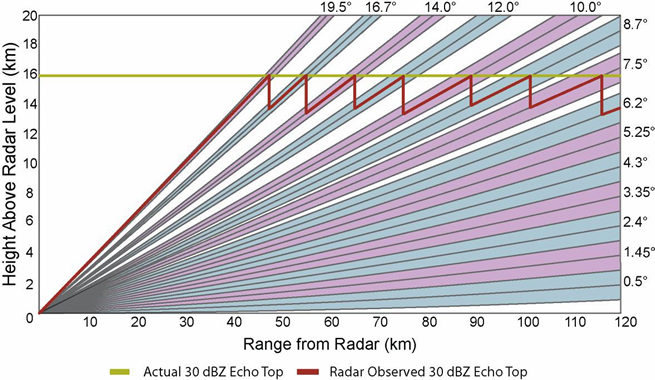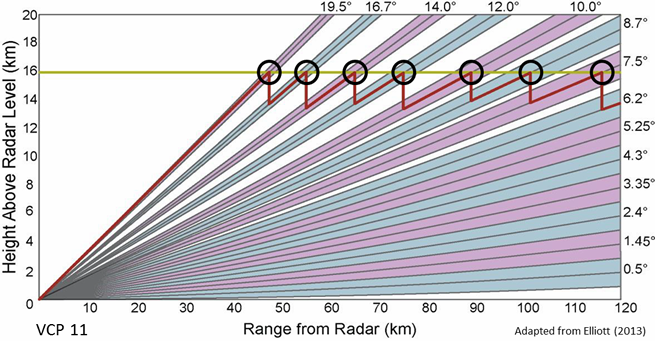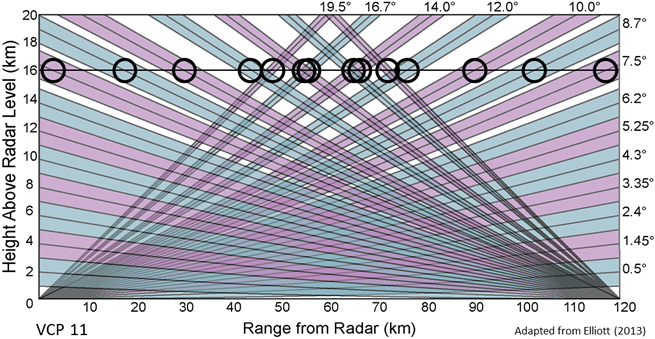xx dBZ Echo Top (ET) - Warning Decision Training Division (WDTD)
Navigation Links
Products Guide
xx dBZ Echo Top (ET)
Short Description
The maximum altitude for a particular reflectivity value (e.g., 18 dBZ) within a vertical column.
Subproducts
18 dBZ ET
30 dBZ ET
50 dBZ ET
60 dBZ ET
Primary Users
NWS: WFO, SPC, CWSU, AWC
FAA: ARTCC, ATCSCC
Input Sources
3D Reflectivity Cube
Resolution
Spatial Resolution: 0.01o Latitude (~1.11 km) x 0.01o Longitude (~1.01 km at 25oN and 0.73 km at 49oN)
Temporal Resolution: 2 minutes
Product Creation
At each horizontal 2D grid point, the reflectivity values at the vertical grid points are checked from the top-down. Once the ET threshold value for the particular sub-product is equaled or exceeded, that altitude and the altitude at the next-highest grid point are used to compute the ET value using linear interpolation based on the slope of the reflectivity value between those two altitudes.
Technical Details
Latest Update: MRMS Version 11.5
References
Elliott, M., 2013: Electrical discharges in the overshooting tops of thunderstorms. M. S. Thesis, School of Meteorology, University of Oklahoma, 139 pp.
Lakshmanan, V., A. Fritz, T. Smith, K. Hondl, and G. J. Stumpf, 2007: An automated technique to quality control radar reflectivity data. J. Appl. Meteor., 46, 288-305.
Lakshmanan, V., K. Hondl, C. K. Potvin, and D. Preignitz, 2013: An improved method for estimating radar echo-top height. Wea. Forecasting, 28, 481-488.
Maddox, R. A., D. S. Zaras, P. L. MacKeen, J. J. Gourley, R. Rabin, and K. W. Howard, 1999: Echo height measurements with the WSR-88D: Use of data from one versus two radars. Wea. Forecasting, 14, 455-460.







